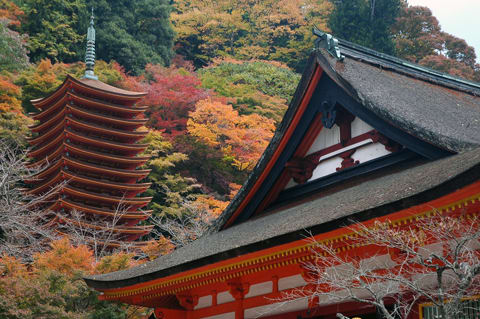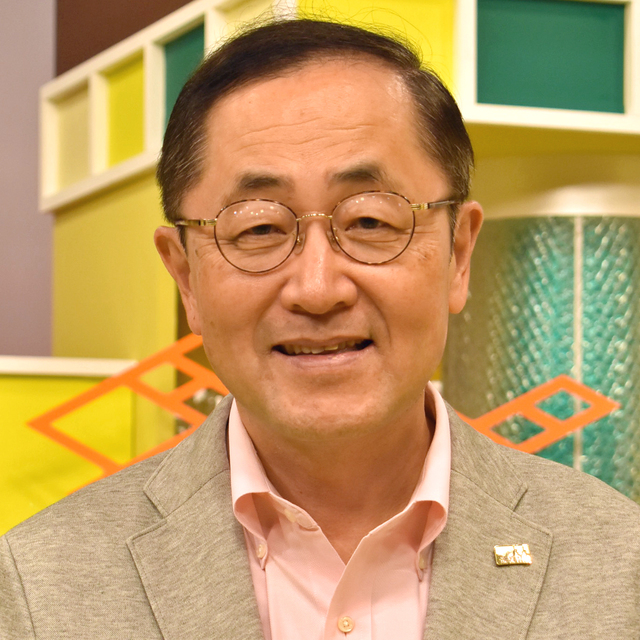I introduce fall foliage viewing spots in Nara Prefecture. (今日のブログでは、英語で奈良県下の紅葉名所を紹介します。例によって、あなたのパソコンの文字化けではありませんので、ご心配なく。)
Nara is one of the most popular destinations for fall foliages. There are many beautiful spots to visit in late fall. From mid November to early December, the prefecture tends to be crowded by tourists. Below is a list of popular places. (All photos were taken by me.) The best time to see fall foliages slightly change every year.
●NARA-KOEN AREA(奈良公園周辺)
According to the website of “Japan National Tourism Organization”,



Nara-kōen Park is located in the center of the city of Nara, extending about 4 kilometers from east to west, and about 2 kilometers from south to north. Many deer graze along the spacious lawns and frolic on the grass. Inside the park area are Tōdai-ji Temple(東大寺), Kōfuku-ji Temple(興福寺), Kasuga-taisha Shrine (春日大社)and many other historic structures that represent the glory of the city over many centuries. Small streams and ponds add charm to the scenery.


In 728, the Emperor Shomu(聖武天皇), who placed great importance upon Buddhism, founded Todai-ji Temple, now inscribed as a World Cultural Heritage Site. It is a head temple, ruling the other 68 Kokubun-ji temples (国分寺 branch temples) scattered throughout the country, and it is said that it was called "Himugashi-no-Odera," or "large temple in the east," because it was located to the east of the then-capital, Heijo-kyo(平城京).
●SYORYAKU-JI TEMPLE(正暦寺)
According to the website of “Free N Easy Travel Agency”,
Goveror Kujo Kanetoshi built this temple in 992 by Imperial edict. It used to be a large temple with pagodas and halls, but there are only a main Hall, a belfry and Fukuju-in House left now. When you walk through the path along the long stone walls with rich moss, you'll imagine how large and gorgeous this temple was in those days. Multi-colored leaves are so mach spectacular in the fall.

Syōryaku-ji Temple is located in the south of Nara City(Bodaisen-cho). But this temple is far from mid area of the city. Syoryaku-ji Temple is famous for the birth place of Japanese Sake(日本酒) as well as beautiful fall foliages.The bus company will have scheduled special buses for hikers in autumn.


●ENJYO-JI TEMPLE(円成寺)
Enjyō-jiTemple is along Yagyu Road(柳生街道 Ninnikusen-cho Nara City). You can find some fixed-route buses bound for Yagyu from Nara Station. According to the website of “Free N Easy Travel Agency”,


This is the most famous temple along the Yagyu Road. The main hall was built in the Muromachi period with the Amida-do style of the Fujiwara era. In the Tahōtō-hall(多宝塔) is placed the image of Great Sun Buddha (大日如来 national treasure), on which Unkei(運慶), a noted sculptor of Buddhist images, inscribed his name when he was young. The Kasuga-do Hall(春日堂) and the Hakusan-do Hall (白山堂 national treasure), which protect the temple in its precincts, are the oldest shrine buildings of the Kasuga style in Japan. The Enjō-ji Garden, made in the Fujiwara era, is a well-laid-out garden of the Pure Land (浄土 Jōdo) style, on the pond of which small boats can be floated.

Tahōtō-hall(多宝塔)

●TANZAN SHRINE(談山神社)
The Tanzan Shrine is located in Sakurai City. According to the website of “Nara Prefecture”,

The Tanzan Shrine was also called the Tonomine Temple(多武峰寺), and was a Buddhist temple prior to the anti-Buddhist movement of the Meiji Era which led to the destruction of Buddhist temples. This shrine originally known as the Myorakuji Temple(妙楽寺), erected by Kamatari Fujiwara's eldest son, Joe to hold a memorial service for his deceased father Kamatari. The title of "Gongen" was conferred upon this shrine by the Emperor Daigo in the fourth year of Encho (926 A.D.). Leading a large number of armed monks, the temple repeatedly engaged in battle with the Kofukuji Temple in the Medieval Period(1192-1573).

Blessed with the beauty of the spring cherry blossoms blending with the main hall of the shrine and the splendor of the colorful autumn leaves woven from the four seasons, the Tanzan Shrine is also called "The Nikko of Kansai(関西の日光)."
●OTHERS
Murō-ji Temple(室生寺)
Onodera Temple(大野寺)
Hitokotonushi Shrine(一言主神社)
Mitarai Valley(みたらい渓谷 Be careful of road information in 2011)
Yoshinoyama(吉野山)
When the leaves of the maples, ginkos and other broadleaved trees turn colour, the effect is truly magical. Many exhibitions are held around Nara in autumn.(e.g. The Annual Exhibition of Shōsō-in Treasures) Autumn is best season to visit Nara. You are very welcome to visit Nara!
Nara is one of the most popular destinations for fall foliages. There are many beautiful spots to visit in late fall. From mid November to early December, the prefecture tends to be crowded by tourists. Below is a list of popular places. (All photos were taken by me.) The best time to see fall foliages slightly change every year.
●NARA-KOEN AREA(奈良公園周辺)
According to the website of “Japan National Tourism Organization”,



Nara-kōen Park is located in the center of the city of Nara, extending about 4 kilometers from east to west, and about 2 kilometers from south to north. Many deer graze along the spacious lawns and frolic on the grass. Inside the park area are Tōdai-ji Temple(東大寺), Kōfuku-ji Temple(興福寺), Kasuga-taisha Shrine (春日大社)and many other historic structures that represent the glory of the city over many centuries. Small streams and ponds add charm to the scenery.


In 728, the Emperor Shomu(聖武天皇), who placed great importance upon Buddhism, founded Todai-ji Temple, now inscribed as a World Cultural Heritage Site. It is a head temple, ruling the other 68 Kokubun-ji temples (国分寺 branch temples) scattered throughout the country, and it is said that it was called "Himugashi-no-Odera," or "large temple in the east," because it was located to the east of the then-capital, Heijo-kyo(平城京).
●SYORYAKU-JI TEMPLE(正暦寺)
According to the website of “Free N Easy Travel Agency”,
Goveror Kujo Kanetoshi built this temple in 992 by Imperial edict. It used to be a large temple with pagodas and halls, but there are only a main Hall, a belfry and Fukuju-in House left now. When you walk through the path along the long stone walls with rich moss, you'll imagine how large and gorgeous this temple was in those days. Multi-colored leaves are so mach spectacular in the fall.

Syōryaku-ji Temple is located in the south of Nara City(Bodaisen-cho). But this temple is far from mid area of the city. Syoryaku-ji Temple is famous for the birth place of Japanese Sake(日本酒) as well as beautiful fall foliages.The bus company will have scheduled special buses for hikers in autumn.


●ENJYO-JI TEMPLE(円成寺)
Enjyō-jiTemple is along Yagyu Road(柳生街道 Ninnikusen-cho Nara City). You can find some fixed-route buses bound for Yagyu from Nara Station. According to the website of “Free N Easy Travel Agency”,


This is the most famous temple along the Yagyu Road. The main hall was built in the Muromachi period with the Amida-do style of the Fujiwara era. In the Tahōtō-hall(多宝塔) is placed the image of Great Sun Buddha (大日如来 national treasure), on which Unkei(運慶), a noted sculptor of Buddhist images, inscribed his name when he was young. The Kasuga-do Hall(春日堂) and the Hakusan-do Hall (白山堂 national treasure), which protect the temple in its precincts, are the oldest shrine buildings of the Kasuga style in Japan. The Enjō-ji Garden, made in the Fujiwara era, is a well-laid-out garden of the Pure Land (浄土 Jōdo) style, on the pond of which small boats can be floated.

Tahōtō-hall(多宝塔)

●TANZAN SHRINE(談山神社)
The Tanzan Shrine is located in Sakurai City. According to the website of “Nara Prefecture”,

The Tanzan Shrine was also called the Tonomine Temple(多武峰寺), and was a Buddhist temple prior to the anti-Buddhist movement of the Meiji Era which led to the destruction of Buddhist temples. This shrine originally known as the Myorakuji Temple(妙楽寺), erected by Kamatari Fujiwara's eldest son, Joe to hold a memorial service for his deceased father Kamatari. The title of "Gongen" was conferred upon this shrine by the Emperor Daigo in the fourth year of Encho (926 A.D.). Leading a large number of armed monks, the temple repeatedly engaged in battle with the Kofukuji Temple in the Medieval Period(1192-1573).

Blessed with the beauty of the spring cherry blossoms blending with the main hall of the shrine and the splendor of the colorful autumn leaves woven from the four seasons, the Tanzan Shrine is also called "The Nikko of Kansai(関西の日光)."
●OTHERS
Murō-ji Temple(室生寺)
Onodera Temple(大野寺)
Hitokotonushi Shrine(一言主神社)
Mitarai Valley(みたらい渓谷 Be careful of road information in 2011)
Yoshinoyama(吉野山)
When the leaves of the maples, ginkos and other broadleaved trees turn colour, the effect is truly magical. Many exhibitions are held around Nara in autumn.(e.g. The Annual Exhibition of Shōsō-in Treasures) Autumn is best season to visit Nara. You are very welcome to visit Nara!
















